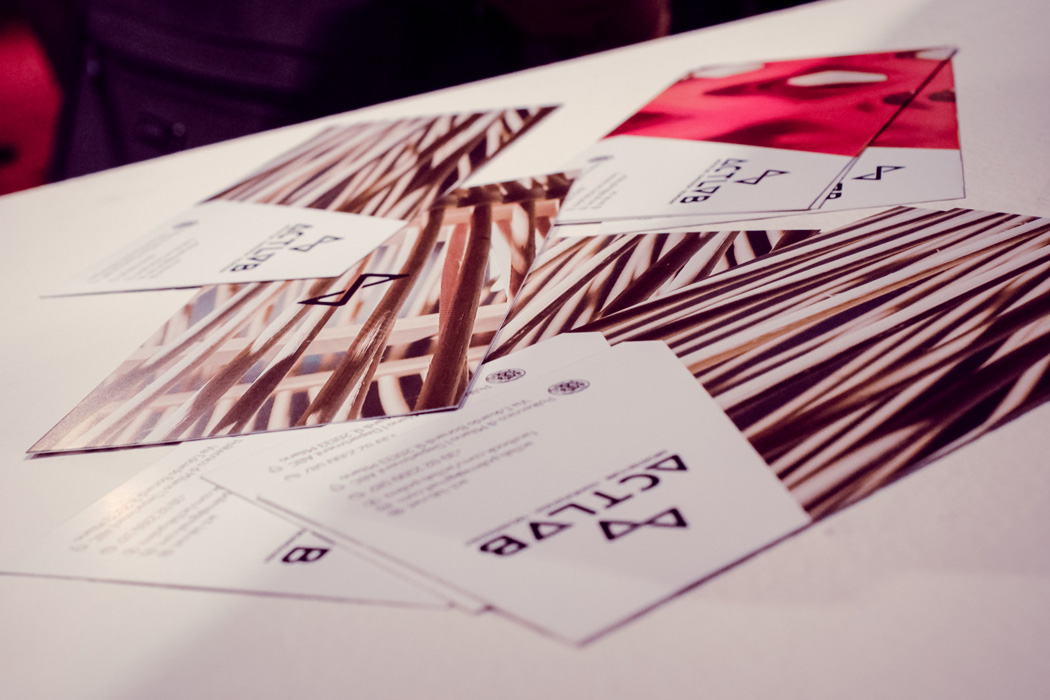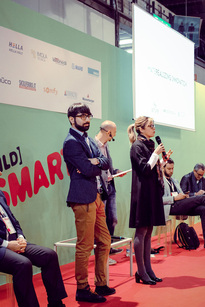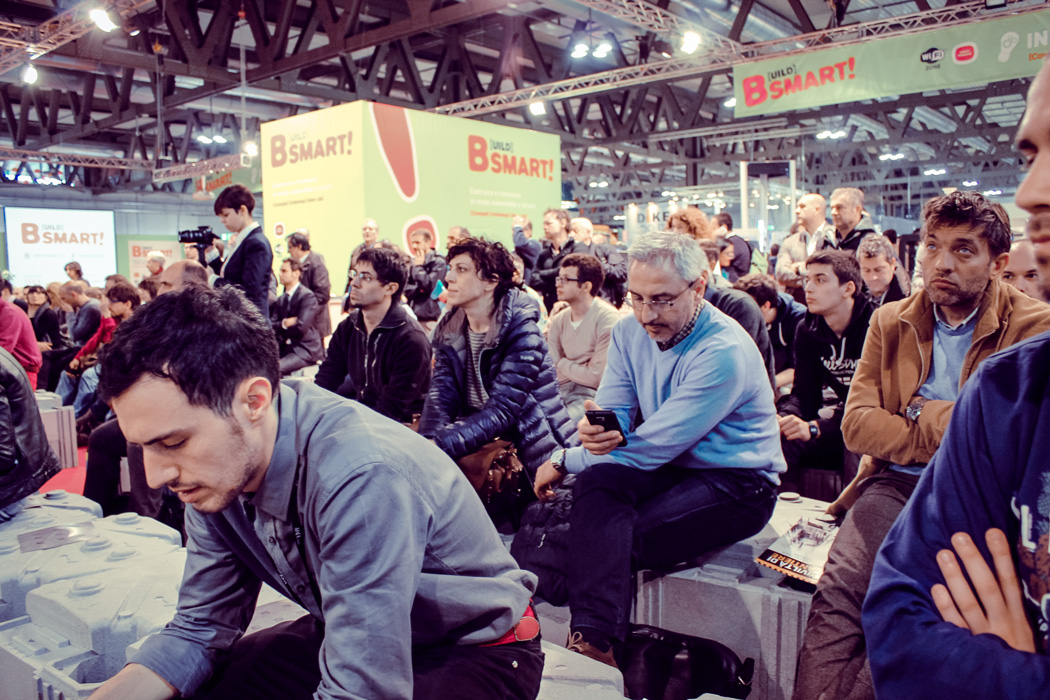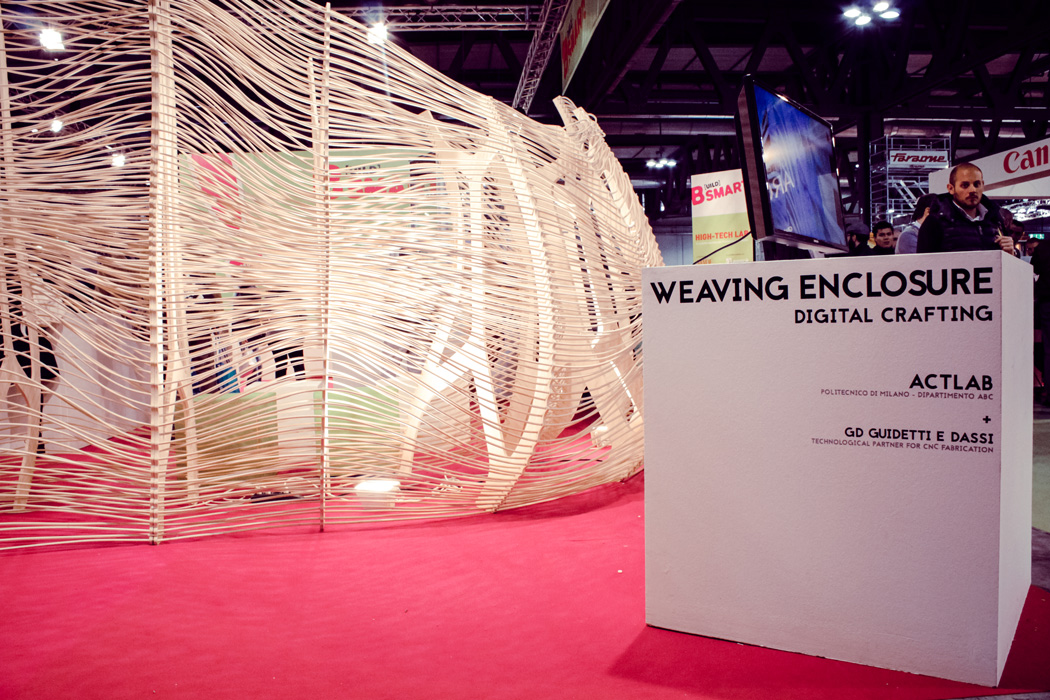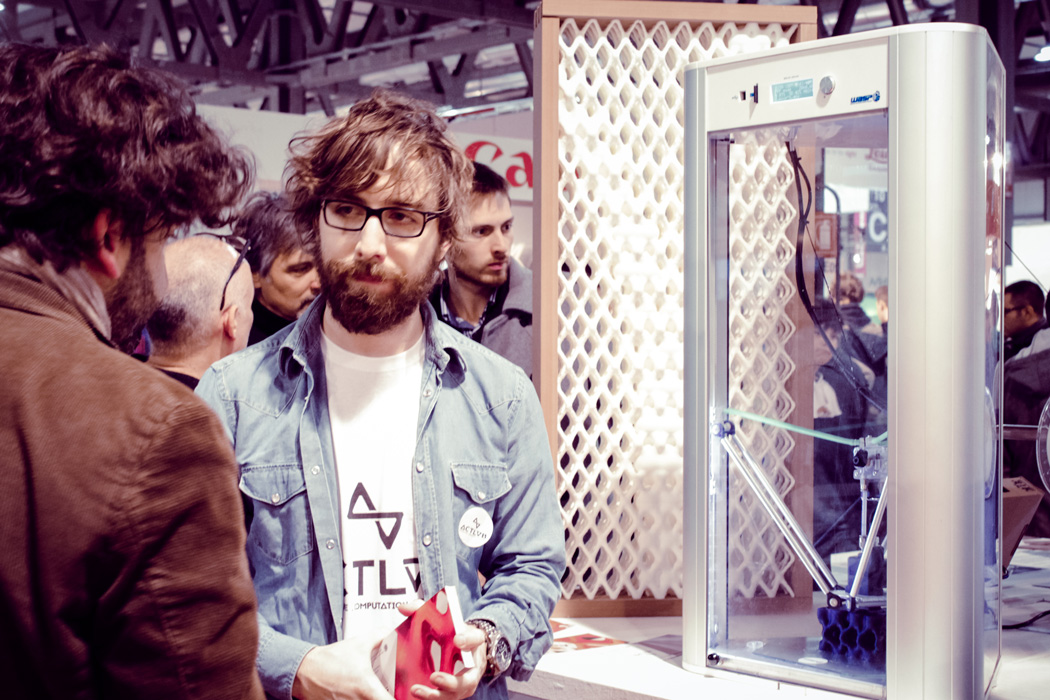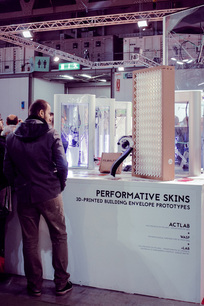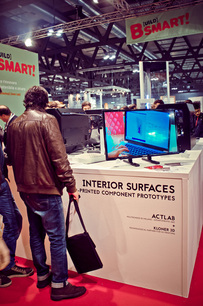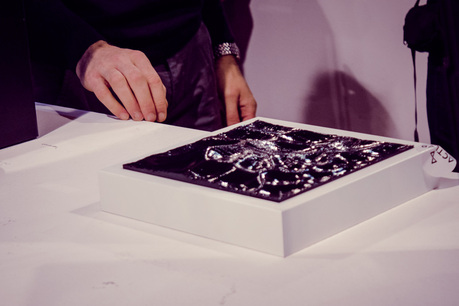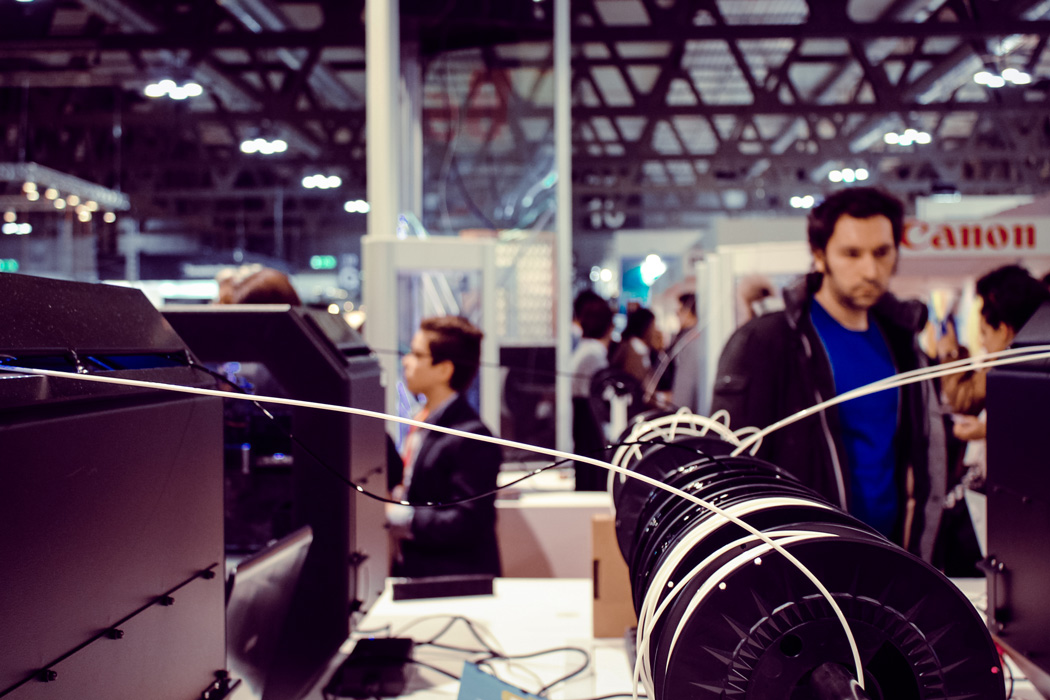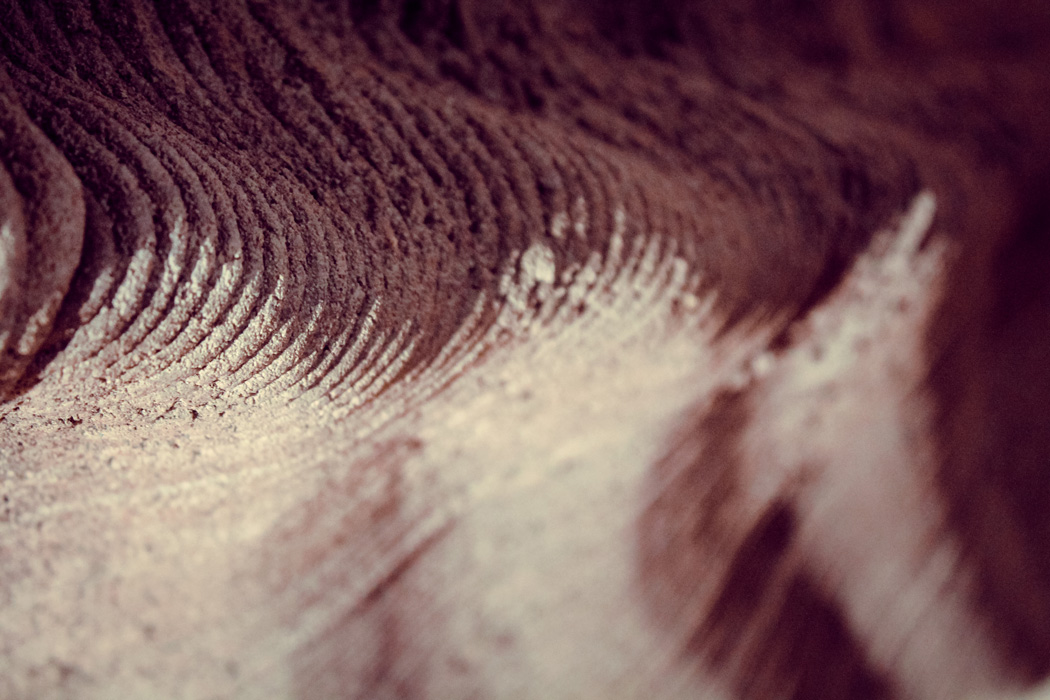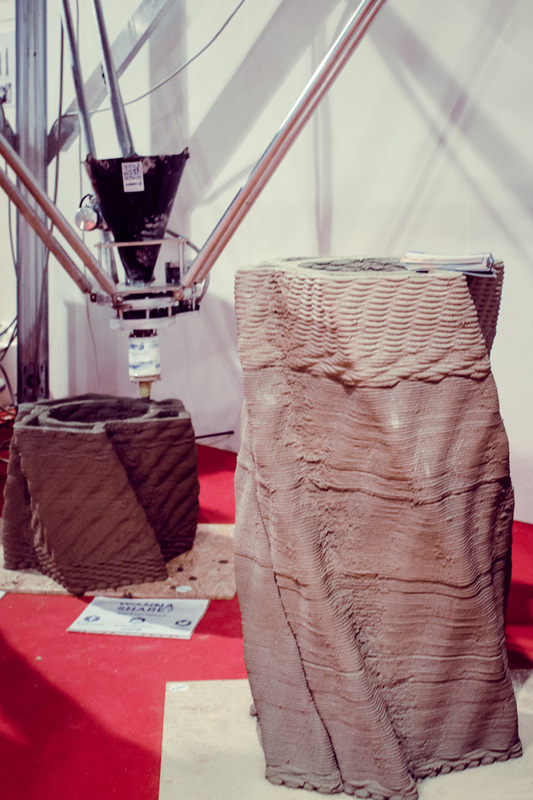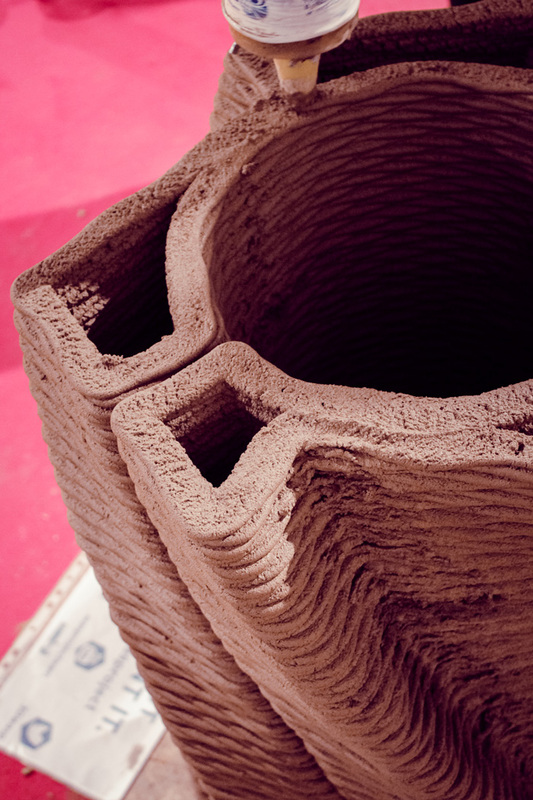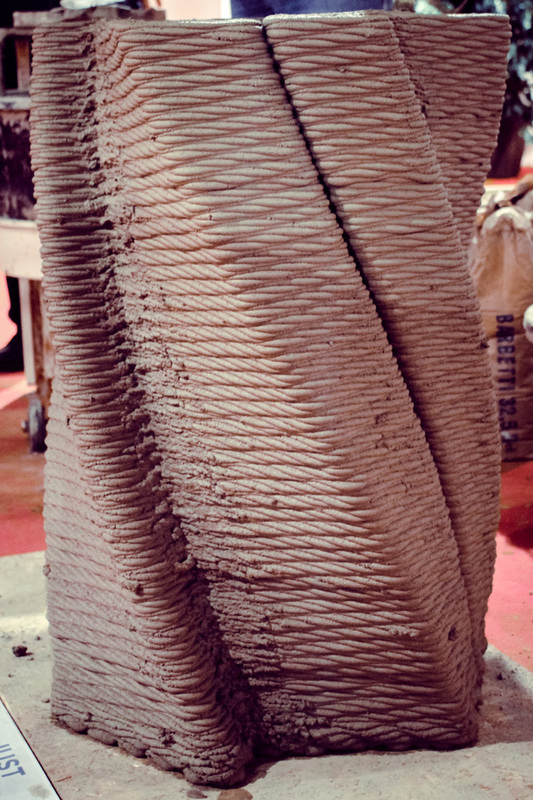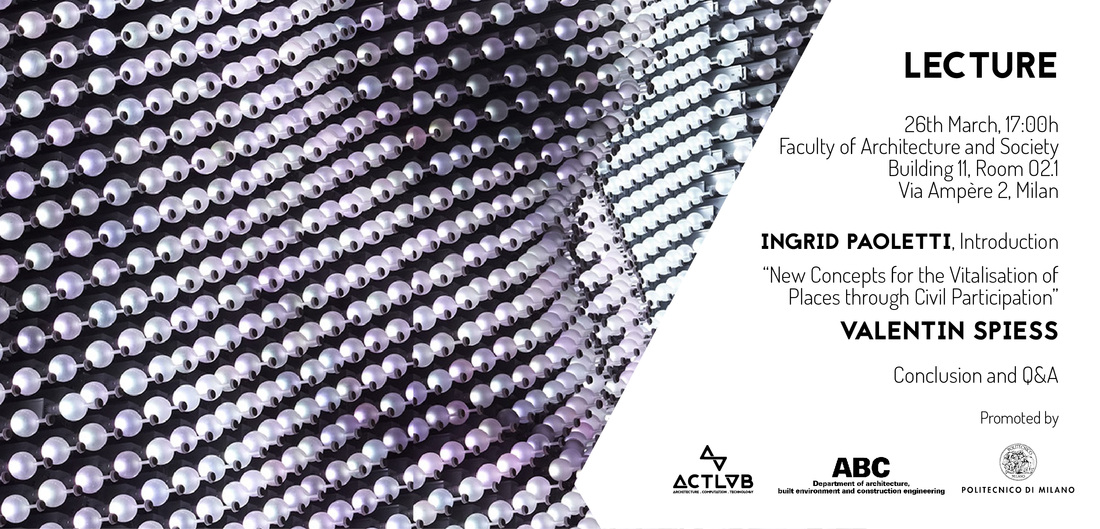During this year’s MADEexpo 2015 Fair, held from 18th to 21st March, the ACTLAB team was given the opportunity to present its recent works and collaborations. Our research unit became a part of BUILD SMART! - a new event organized by MADEexpo in partnership with Agora and many accredited industry partners, which spreads knowledge and promotes technological innovation in the construction industry. Roberto Naboni and Ingrid Paoletti presented a lecture entitled “MateRealizing Innovation” where topics like material computation, digital crafting and new paradigms for sustainability were tackled.
During the days of MADEexpo 2015 Fair, visited by over 200 000 people, ACTLAB presented Weaving Enclosure, 3D Printed Performative Skins and Twisted Columns.
The experimental installation on the emergent properties of weaving material systems in architecture “Weaving Enclosure” created in collaboration with “GD Guidetti e Dassi” has posed a great interest to the visitors with its combination of material computation techniques and digital craft.
“Performative Skins” developed in collaboration with WASProject and FiloAlfa is researching on experimental construction systems for building skins through the use of additive manufacturing. Focusing on the potentials of plastic, the proposed skins involve the creation of an entire parametric workflow, to study envelopes responding to different mechanical and environmental performances, with the final objective of generating a unique multi-performative skin made of components. A multi-scalar design enhancement is proposed to obtain a topologically optimized structural layout. The 3D printed prototype shows a custom-developed structural pattern, which represents an internal micro-structure. Parallelly, a second experiment aims at optimizing mechanical performances through a corrugation of the external surface.
“Interior Surfaces” conceived in cooperation with Kloner3D and FiloAlfa investigates the application of additive manufacturing technology for the construction of three dimensional building components for interior finishings. 3D printing gives the possibility to explore different features of the textures like transparency, translucency, glossiness and differential thickness. Different tiles prototypes serving as wall cladding have been designed with varying aspects and properties enhancing the sensorial perception of the environment: visual, tactile or acoustic. The integrated tessellation allows the optimization of the production and assembly process.
Finally, in collaboration with WASProject, ACTLAB was able to 3D print a 1:1 cement prototype of a structural support with 30 cm diameter and 100 cm height using WASP Big Delta 3D printer. The “Twisted Columns” experiment is based on the study of a monolith column in which the use of printing allows the achievement of various shapes and sizes, simplifying the manufacturing process compared to traditional techniques which would require complex formwork. The family of columns is designed parametrically and varies in geometry and pattern.

